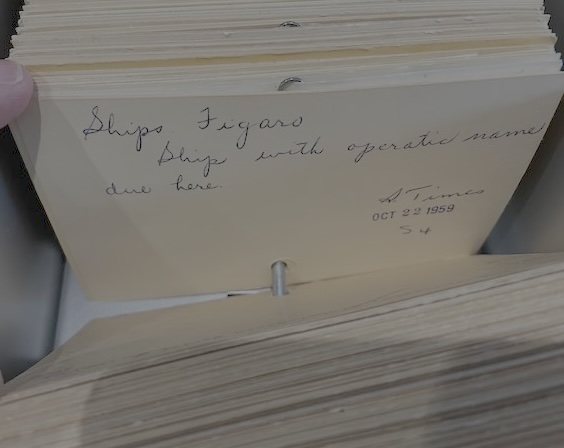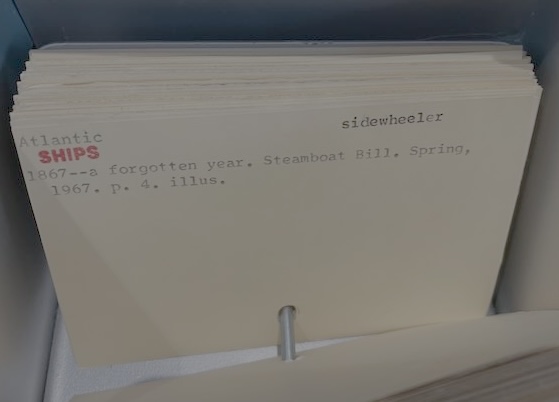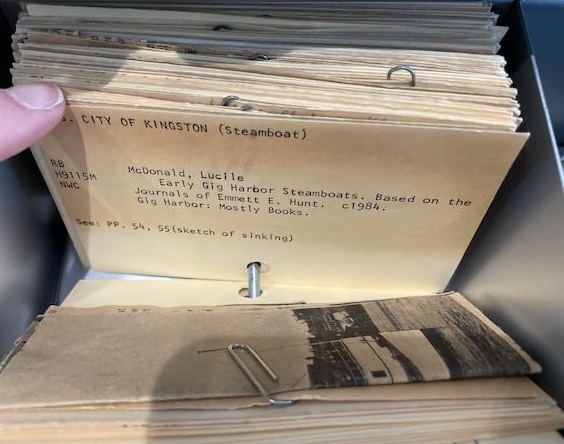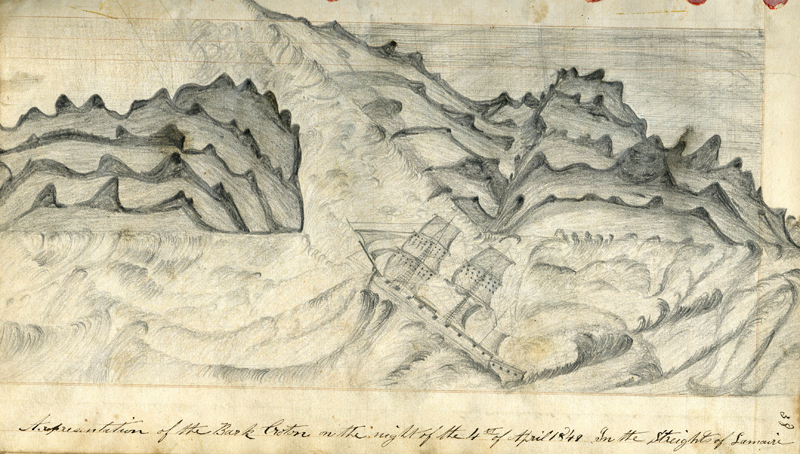We took a break from “This Week in Maritime History” posts for a bit, but we are back! Check out these events in this coming week in maritime history:
June 1: In 1850, Captain John S. DeBlois set sail in the whaleship Ann Alexander (Wikipedia, ShipIndex) from New Bedford, Massachusetts. While many ships set sail on whaling voyages at this time, the voyage was to become particularly notable because the next year, in the southern Pacific Ocean, while hunting whales, one whale crushed one of the small whaleboats, then turned its attention to the Ann Alexander. The whale rammed the Ann Alexander, creating a hole in the side of the ship below the waterline, and causing it to start sinking quickly. The crew was able to collect only a few provisions before the ship sank, but they got into two whaleboats and aimed northward. They were spotted, and rescued, by the whaler Nantucket (ShipIndex) two days later, and the entire crew eventually returned to New York. The whale, which had developed infections from the two harpoons and pieces of timber under its skin, was caught and killed five months later by the crew of the Rebecca Simms (ShipIndex). Herman Melville’s tome, Moby-Dick, was published just two months after this incident, causing Melville to write, “Ye Gods! What a commentator is this Ann Alexander whale… I wonder if my evil art has raised this monster.”
June 1: USS Chesapeake (Wikipedia, ShipIndex) was captured by HMS Shannon (Wikipedia, ShipIndex), in 1813, off the coast of Boston. Chesapeake sailed with a flag that read “Free Trade and Sailors’ Rights”, and had challenged Shannon to a battle when she sailed out of Boston the day before, but the written challenge had not been received before the battle occurred. But when the two ships met at sea, Chesapeake was seriously damaged, and Shannon’s accurate marksmen killed many men and officers on board Chesapeake. As Captain James Lawrence lay dying from a shot by a sniper, he was said to have given the order, “Don’t give up the ship. Fight her till she sinks.” Just 15 minutes after the first gun was fired, Shannon had taken Chesapeake. Chesapeake was taken into the Royal Navy and served as HMS Chesapeake for six years, before being sold and broken up to build a new watermill in England. The building still exists; it’s now an antique mall.
June 5: The Battle of Midway began on this day in 1942. The US Pacific Fleet decisively defeated the Imperial Japanese Navy after American code breakers had determined the Japanese plan of attack in advance. The Japanese fleet was caught by surprise, and Japan lost all of the aircraft carriers present at the battle – Akagi (Wikipedia, ShipIndex), Kaga (Wikipedia, ShipIndex), Sōryū (Wikipedia, ShipIndex), and Hiryū (Wikipedia, ShipIndex), along with the cruiser Mikuma and other ships, planes, and pilots. American forces lost the aircraft carrier Yorktown (Wikipedia, ShipIndex) and the destroyer Hammann (Wikipedia, ShipIndex). The battle was a significant turning point for the American campaign in World War II, and several ships later took the name Midway, in honor of the victory: Escort carrier CVE-63 was initially named USS Midway, but then renamed to USS St. Lo, so a larger aircraft carrier, CV-41, could take the name USS Midway (Wikipedia, ShipIndex). CV-41 is now docked in San Diego, at the USS Midway Museum.
June 6: As memorialized by Jerry Bryant, “On the sixth day of June, eighteen-ninety and six, / Messrs. Harbo and Samuelsen started to row…” George Harbo and Frank Samuelson left on this day in 1896 to become the first people to row across an ocean – in this case, the Atlantic. They rowed a specially-built surfboat, Fox (Wikipedia, ShipIndex), crossing the ocean in about two months. Look for another post in about two months, noting their landfall.
In current news, USCGC Eagle is expected to visit Portland, Oregon, on June 6, and will be open for tours. I can’t find specific details on where the ship will dock, so if you have some details, please share! The next week, Eagle is scheduled to visit Astoria, then head south to San Francisco, head north to Seattle and Victoria, Canada, then head back to SF again. The full tentative schedule can be seen here.
For more about these ships, check out ShipIndex.org. And let us know if you have events that you think we should include!







